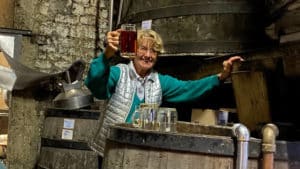
Cognac Tasting Tour wishes you a Happy New Year 2021
Let’s welcome 2021 under the best auspices. Your 2021 destination : the Cognac vineyards and the Charente valley, of course!
From a quality vineyard, transported by boat to the countries of northern Europe, the wines of Poitou, La Rochelle and Angoumois were, from the 13th century, the delight of the English, the Dutch and the Scandinavians.
From the 17th century, they are transformed into eau-de-vie, which will be enhanced in oak barrels to become cognac. Thus begins the adventure of a product that will become a world-renowned brandy.
In the 16th century, Dutch vessels came to Cognac and the Charentais ports for the renowned wines of the “Champagne” and “Borderies” vintages.
The vineyards of Aunis produce such quantities of wine that it becomes difficult to dispose of them the more their quality decreases, because these wines, of low alcohol content, suffer from the length of the voyages at sea.
It was around this time that Dutch merchants used it to fuel their new distilleries. They transform it into “burnt wine”, the brandwijn, which will give the word “brandy”. Thinking of recreating the initial wine, the Dutch drink this elongated beverage.
At the beginning of the 17th century, double distillation appeared in the region, allowing the product to travel in the form of unalterable brandy, which, much more concentrated than wine, was less expensive to transport. The first stills installed in Charente by the Dutch will be gradually modified; the French will master and improve the technique with the double distillation process. As a result of delays in loading boats, we notice that the brandy improves as it ages in oak barrels (from Limousin) and that it can even be consumed pure.
From the end of the 17th century, and especially from the following century, the market was organized and, to meet demand, trading businesses were created, the “Comptoirs”, in the main towns of the region, most of them of Anglo-Saxon origin. Some still exist. They collect the eaux-de-vie produced and establish regular relationships with their buyers, in Holland, England, Northern Europe, then America and the Far East.
Today, cognac is exported to more than 150 countries. Whatever the way of consuming it, it is, from the Far East to the American continent via Europe, synonymous with a product of very high quality, symbol of France and its Art of Living. A luxury product, it is sensitive to the political and economic context of the planet and is the subject, on the part of professionals, of extreme vigilance, so that, faced with growing international competition, its quality, its specificity and its authenticity are unmatched.
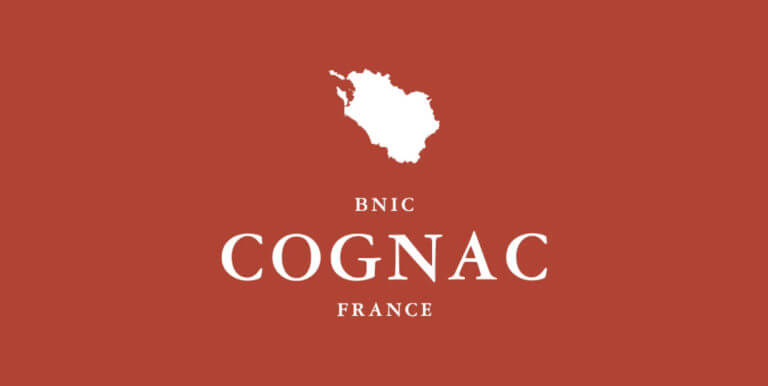
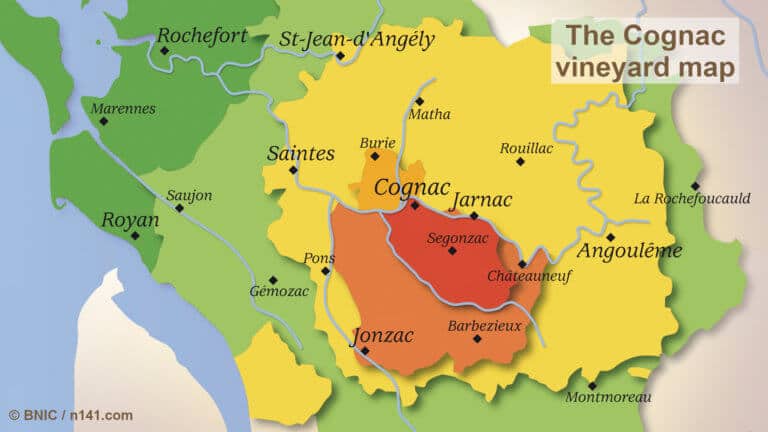
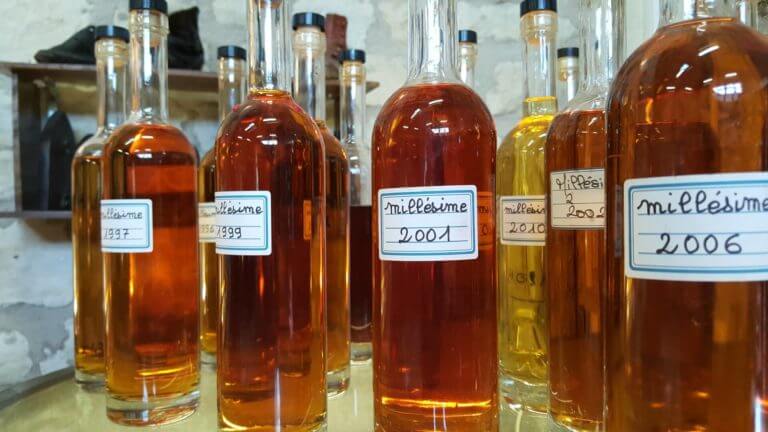
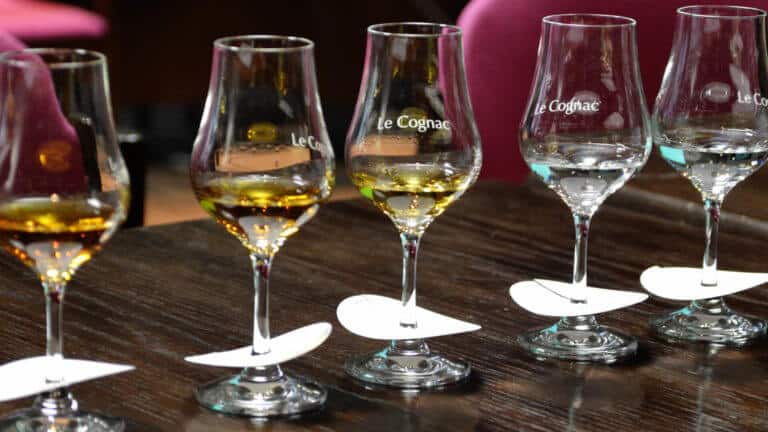
The Cognac Delimited Region was determined by the decree of May 1, 1909. It is located north of the Aquitaine basin, on the edge of the Atlantic Ocean. It ends in the west with the edges of the Gironde and the islands (Ré and Oléron), and in the east, in Angoulême, at the first foothills of the Massif Central. The production area includes the departments of Charente-Maritime, a large part of Charente and some communes of Deux-Sèvres and Dordogne. The landscape consists of plains and low hills with gentle reliefs. The Charente crosses the region, fed by small rivers: the Né, the Antenne, the Seugne… The temperate oceanic climate is fairly homogeneous. The annual average temperature is around 13 ° C, with fairly mild winters.
The total area of the Delimited Region exceeds one million hectares (1,095,119 ha), but the vineyard occupies only 78,179 ha. About 95% of this vineyard is used for the production of cognac.
Within the Delimited Region, from the characteristics of the soils described by the geologist Henri COQUAND in 1860, production areas were defined for each of the following appellations or mentions (decree 1938):
With its 34,703 ha, Grande Champagne, covered with 13,159 ha of vines, gives birth to very fine and very light eaux-de-vie, with a predominantly floral bouquet, requiring long ageing in oak barrels to achieve their full potential maturity.
The soils of Champagnes are fairly shallow clay-limestone on soft chalky limestone from the Cretaceous period. The lime content is very high from the surface and can exceed 60%. Montmorillonite-type clays give these soils good structure, high fertility and adequate water reserve. Despite their thinness, these soils are therefore little afraid of drought, especially since the porous subsoil allows capillary rise: it behaves like an enormous sponge through which the water can slowly rise as the summer drought is increasing.
La Petite Champagne covers an area of 65,603 ha, of which 15,246 are devoted to the production of cognac. The eaux-de-vie which are produced from it present more or less the same characteristics as those of Grande Champagne, without, however, offering their extreme finesse.
It is the smallest of the 6 crus: 12,540 ha. Here the surface horizons are mostly flint clays resulting from the decarbonization of limestone.
Located to the north-east of Cognac, its 3,987 ha vineyard devoted to cognac gives round, bouquety and sweet eaux-de-vie, characterized by a scent of violets. They have the reputation of acquiring their optimal quality after a shorter maturation than the eaux-de-vie from “Champagne”.
The majority of this cru is occupied by “groies”, clay-limestone soils that are superficial like champagnes, but red and very stony, of hard limestone from the Jurassic period. In a low pressure area north of Cognac, there is also the “Netherlands”, with very clayey soil (up to 60% clay). The Fins Bois surrounds the three previous vintages and covers 349,803 ha, of which 31,001 produce round, supple eaux-de-vie that age fairly quickly and whose bouquet is reminiscent of pressed grapes.
Sandy soils are found in Les Bons Bois in coastal areas, in certain valleys, and especially in the entire southern part of the vineyard. These are sands that erosion has brought from the Massif Central. The vines are quite scattered there, among other crops, meadows for breeding, forests of pines and chestnut trees. The Bons Bois form a vast belt of 372,053 ha, of which 9,308 are intended for the production of cognac.
This cru has less than 1,101 ha of vines intended for the production of white cognac wines. The predominantly sandy soil, located along the ocean or on the islands of Ré and Oléron, produces eaux-de-vie that age quickly and have a distinctive terroir taste.
Les Bois (Fins Bois, Bons Bois, Bois à Terroirs) are so called because they were cleared at the beginning of the 19th century. The central growths of Champagnes and Borderies are the most wine-growing.
The word “Fine” can only be used if it is accompanied by the name of an AOC wine or cider brandy (eg Fine Cognac, Fine Armagnac, Fine Calvados, Fine Grande Champagne, Fine Petite Champagne, Fine Fins Bois, Fine Bons Bois…) (law 1928).
The wines intended for distillation producing eaux-de-vie entitled to the controlled appellations “cognac”, “Cognac brandy” and “Charentes brandy” come from the following grape varieties (decree 1936):

Let’s welcome 2021 under the best auspices. Your 2021 destination : the Cognac vineyards and the Charente valley, of course!
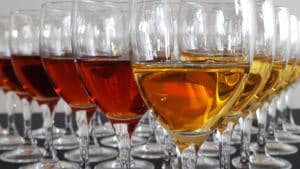
Come to Grande Champagne, the heart of the cognac vineyard, in an old cellar for a cognac masterclass off the beaten track
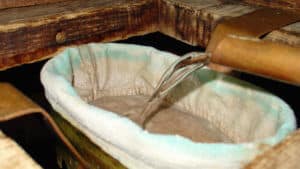
Pot still heating at the time of traditional distillation in the land of Cognac, the largest concentration of distilleries in the world
By subscribing to our newsletter you will receive our news from the Cognac and Charentes vineyards a few times a year.
In accordance with GDPR rules, you can cancel your registration at any time.
| Cookie | Duration | Description |
|---|---|---|
| pll_language | 1 year | The pll _language cookie is used by Polylang to remember the language selected by the user when returning to the website, and also to get the language information when not available in another way. |
| Cookie | Duration | Description |
|---|---|---|
| _gat | 1 minute | This cookie is installed by Google Universal Analytics to restrain request rate and thus limit the collection of data on high traffic sites. |
| Cookie | Duration | Description |
|---|---|---|
| CONSENT | 16 years 3 months 24 days 7 hours | These cookies are set via embedded youtube-videos. They register anonymous statistical data on for example how many times the video is displayed and what settings are used for playback.No sensitive data is collected unless you log in to your google account, in that case your choices are linked with your account, for example if you click “like” on a video. |
| _ga | 2 years | The _ga cookie, installed by Google Analytics, calculates visitor, session and campaign data and also keeps track of site usage for the site's analytics report. The cookie stores information anonymously and assigns a randomly generated number to recognize unique visitors. |
| _gid | 1 day | Installed by Google Analytics, _gid cookie stores information on how visitors use a website, while also creating an analytics report of the website's performance. Some of the data that are collected include the number of visitors, their source, and the pages they visit anonymously. |
| Cookie | Duration | Description |
|---|---|---|
| fr | 3 months | Facebook sets this cookie to show relevant advertisements to users by tracking user behaviour across the web, on sites that have Facebook pixel or Facebook social plugin. |
| IDE | 1 year 24 days | Google DoubleClick IDE cookies are used to store information about how the user uses the website to present them with relevant ads and according to the user profile. |
| test_cookie | 15 minutes | The test_cookie is set by doubleclick.net and is used to determine if the user's browser supports cookies. |
| VISITOR_INFO1_LIVE | 5 months 27 days | A cookie set by YouTube to measure bandwidth that determines whether the user gets the new or old player interface. |
| YSC | session | YSC cookie is set by Youtube and is used to track the views of embedded videos on Youtube pages. |
| yt-remote-connected-devices | never | These cookies are set via embedded youtube-videos. |
| yt-remote-device-id | never | These cookies are set via embedded youtube-videos. |
| yt.innertube::nextId | never | These cookies are set via embedded youtube-videos. |
| yt.innertube::requests | never | These cookies are set via embedded youtube-videos. |
| _fbp | 3 months | This cookie is set by Facebook to display advertisements when either on Facebook or on a digital platform powered by Facebook advertising, after visiting the website. |
| Cookie | Duration | Description |
|---|---|---|
| BkCheckoutSession | session | This cookie is set by the Booking kit. This cookie is used for operation of the shop. |
| BkOpSession | 1 day | No description available. |
| cookielawinfo-checkbox-functional | 1 year | The cookie is set by GDPR cookie consent to record the user consent for the cookies in the category "Functional". |
| slimstat_tracking_code | 30 minutes | No description available. |
| _gat_bkTracker | 1 minute | No description available. |